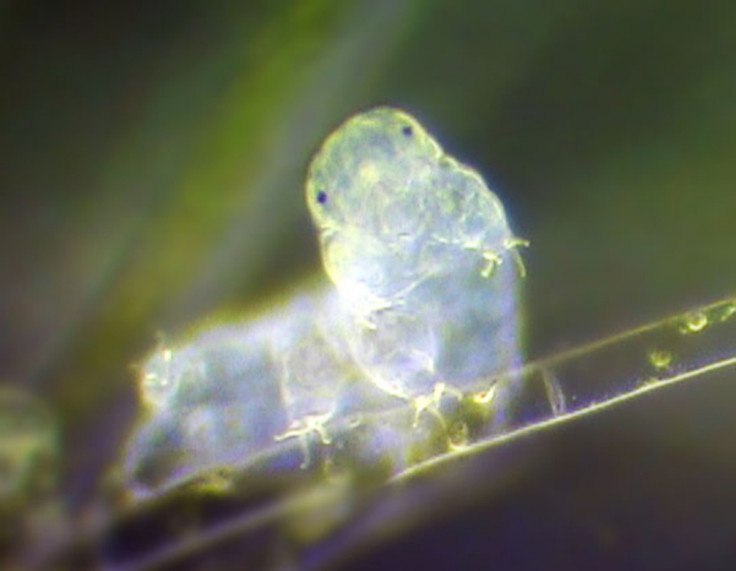Tardigrade survival: A fifth of water bear genome made up of foreign DNA

The tardigrade – also known as the "water bear" – is made up of nearly a fifth of foreign DNA, according to researchers from the University of North Carolina who successfully sequenced the genome of the micro-animal.
The tardigrade, which is almost invisible to the naked eye with a maximum body length of 1.5mm, is one of the toughest animals on the planet and is known for its ability to survive in extreme weather conditions ranging from a single degree above absolute zero to well above 100C, and can withstand six times more pressure of that of the deepest ocean trenches.
Although it is not unusual to find that some animals are made up of foreign DNA, scientists were surprised to learn the water-dwelling critter comprised 17.5% foreign DNA. Co-author Bob Goldstein, a professor in the biology department in UNC's College of Arts and Sciences, said: "We had no idea that an animal genome could be composed of so much foreign DNA. We knew many animals acquire foreign genes, but we had no idea that it happens to this degree."
Most animals have less than 1% foreign DNA and the previous record holder, the rotifer, only had half as much as the tardigrade.
The team say their research, which was published in the Proceeding of the National Academy of Sciences, implies there is a connection between foreign DNA and the ability to survive in extreme conditions, and it also raises questions on how DNA is inherited. Thomas Boothby, the lead author, said tardigrades take on 6,000 foreign genes, mainly from bacteria and the rest from plants, fungi and Archaea by using a process called horizontal gene transfer, which is where species swap genetic material, rather than acquiring it all from their parents.
"Animals that can survive extreme stresses may be particularly prone to acquiring foreign genes - and bacterial genes might be better able to withstand stresses than animal ones," he said. Boothby and his team theorise that foreign DNA is randomly getting into the genome but the consistent DNA is what allows the tardigrade to survive in extreme conditions.
In the harshest environments, they think that the tardigrade's DNA breaks into tiny pieces. Once it is back in normal conditions, the cell's membrane and nucleus become leaky and allow DNA to pass through to replace and repair their DNA.
"We think of the tree of life, with genetic material passing vertically from mom and dad," said Boothby. "But with horizontal gene transfer becoming more widely accepted and more well known, at least in certain organisms, it is beginning to change the way we think about evolution and inheritance of genetic material and the stability of genomes. So instead of thinking of the tree of life, we can think about the web of life and genetic material crossing from branch to branch. So it's exciting. We are beginning to adjust our understanding of how evolution works."
© Copyright IBTimes 2025. All rights reserved.






















